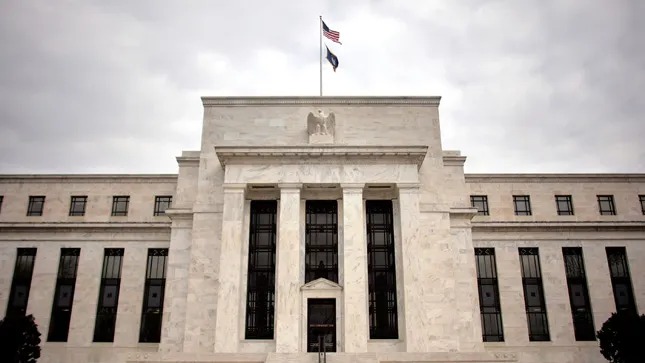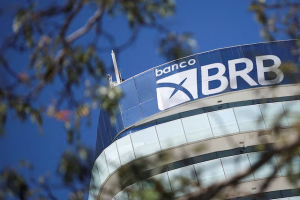Investors' attention in May is directed towards the decisions of the U.S. Federal Reserve, which include the interest rate decision and the monetary policy statement, in addition to the press conference held by the bank's chairman Jerome Powell. These decisions come at a time when the U.S. economy is experiencing a slowdown in the rate of inflation and mixed performance in the labor market, which directly reflects on the performance of the dollar and major currencies, as well as its clear impact on stock and commodity markets such as gold and oil.
First: U.S. Economic Data Boosts Likelihood of Monetary Policy Easing Recent economic data indicates a noticeable slowdown in the rate of inflation within the United States, bolstering expectations that the Federal Reserve may lean toward easing its monetary policy later this year.
In this context, the annual Consumer Price Index revealed a decline in inflation to 2.4% in March, the lowest level in six months, compared to 2.8% in February, and below expectations of 2.6%. Core inflation, which excludes food and energy prices, also fell to 2.8% from 3.1% in February, and below expectations of 3%.
On the labor market front, the U.S. economy added 177,000 jobs in April, exceeding expectations of 138,000 jobs, while the unemployment rate remained steady at 4.2%. Conversely, the Personal Consumption Expenditures (PCE) index, the Fed's preferred measure of inflation, came in below expectations, showing no growth in March compared to a 0.5% increase in February, reflecting weak inflationary pressures.
These recent economic data, along with the slowdown in job growth, may put the U.S. Federal Reserve in a position to consider lowering interest rates in the coming months, provided that these indicators continue to decline.
Second: Strong Expectations for Interest Rate Hold with Possibility of Future Cuts Market expectations indicate that the U.S. Federal Reserve will not reduce interest rates during the current meeting, despite rising concerns over the economic slowdown and the impact of trade policies. According to the CME FedWatch tool, the probability of keeping interest rates in the range of 4.25% - 4.5% stands at 97%, confirming the continuation of a tight monetary policy at this time.
Barclays analysts have revised their economic forecasts, lowering their estimates for U.S. GDP growth for 2025 while raising their inflation expectations. Consequently, the firm now predicts that the Federal Reserve will cut U.S. interest rates twice this year, in June and September.
Morgan Stanley (MS) has joined Barclays and Macquarie in predicting that the U.S. Federal Reserve will make one cut to the interest rate by 25 basis points this year, pointing to the uncertainty stemming from the tariff policies pursued by President Donald Trump.
Third: Statements from U.S. Federal Reserve Officials Reflect Caution Amid Trade Policy Turmoil Recent statements from senior officials at the U.S. Federal Reserve have been characterized by extreme caution in light of economic and trade developments. Jerome Powell, the Fed chairman, affirmed that the U.S. economy remains strong but cautioned that inflation may return due to the trade policies of the U.S. administration, especially the new tariffs. He noted that it is still early to make a decision regarding interest rate cuts, emphasizing that the bank will continue to monitor developments.
For her part, Susan Collins, the president of the Boston Federal Reserve, indicated that interest rates are likely to remain high for longer than previously expected due to ongoing inflationary pressures.
Adriana Kugler, a member of the U.S. Federal Reserve, stressed that the recently imposed tariffs could raise prices beyond expectations, which may keep borrowing costs elevated for a longer period to ensure inflation is contained.
Fourth: Scenarios for Upcoming Federal Reserve Decisions... How Will Markets React? Scenario One: If the U.S. Federal Reserve decides to keep interest rates unchanged while hinting at the possibility of lowering them soon due to slowing inflation and a weak labor market, this could lead to a decline in the U.S. dollar, giving gold, stock markets, and cryptocurrencies a strong positive boost.
Scenario Two: If the Fed emphasizes in its statement and press conference the need for cautious monitoring and reliance on future data, especially given the ongoing job growth and potential impacts of trade policies, this could strengthen the U.S. dollar, negatively affecting gold prices and cryptocurrencies, including bitcoin, alongside a decline in U.S. stocks.
In conclusion, the markets are in a state of cautious anticipation, and any signal from the U.S. Federal Reserve toward a change in interest rates will be met with a quick response from gold, the dollar, cryptocurrencies, and stock markets. In this complex scenario, the most likely outcome remains to temporarily maintain interest rates, while gradually opening the door to easing should economic indicators continue to decline over the next two quarters.













